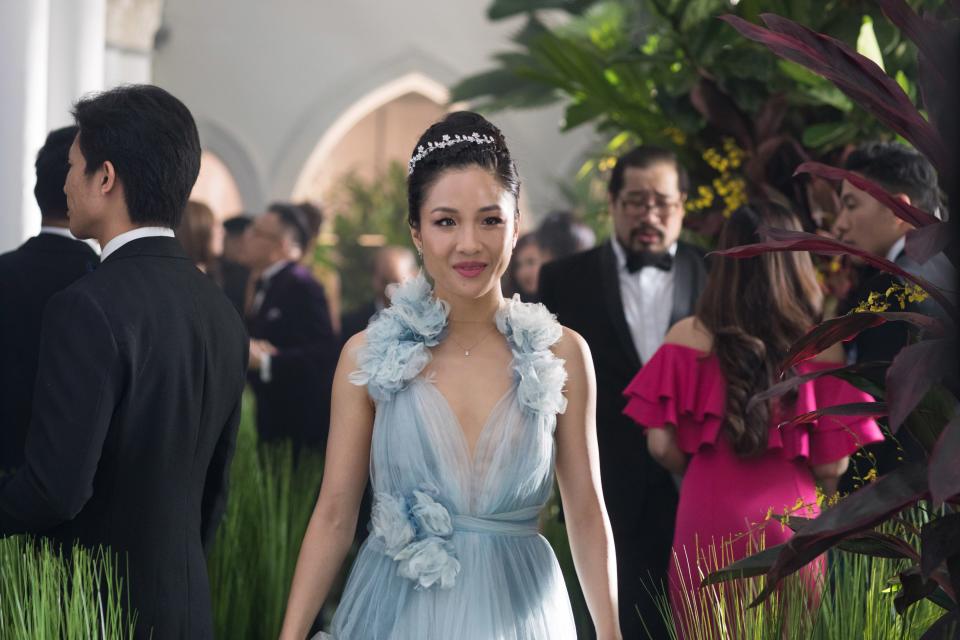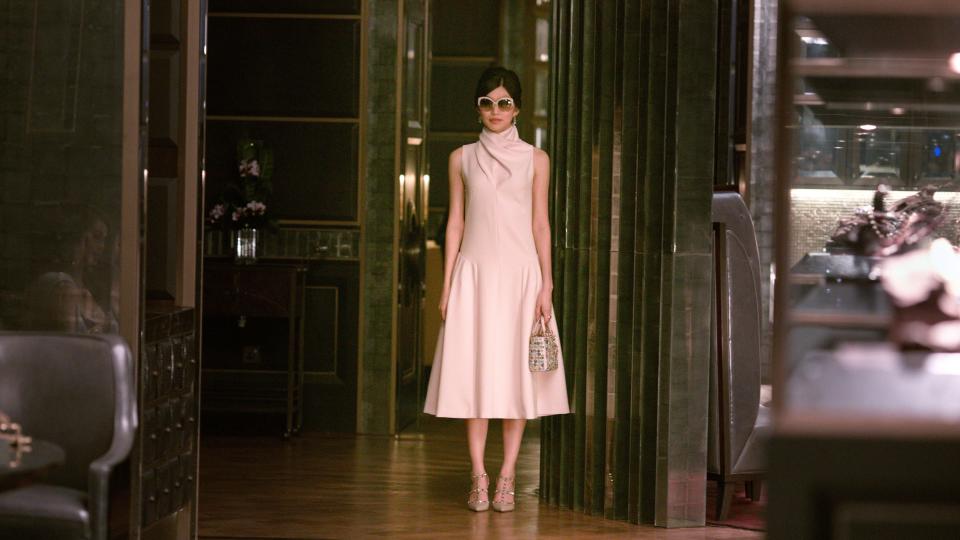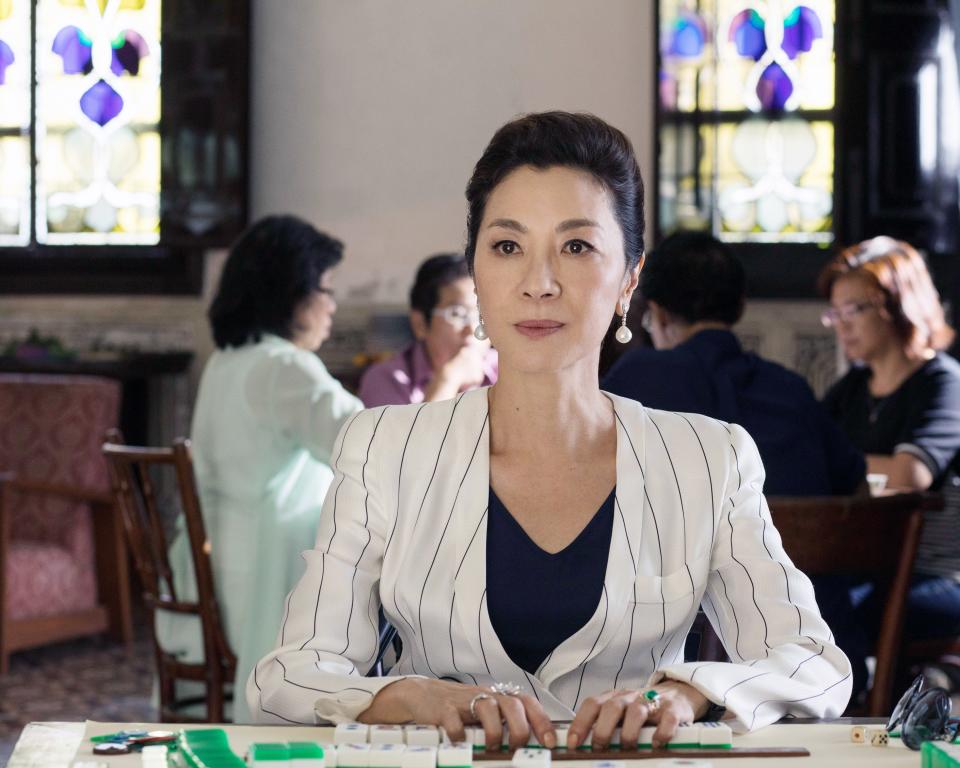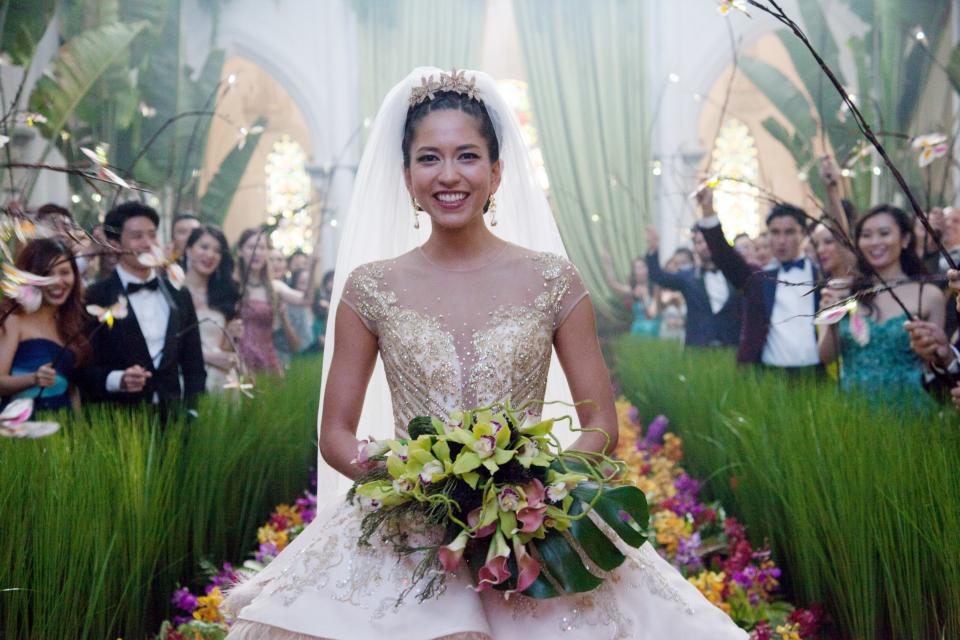Crazy Rich Asians Wardrobe Stylist Mary Vogt Talks Working With Local Southeast Asian Designers
Growing up as a minority, I've always wanted to be able to go to the theater and watch a movie full of people who look and act like me. Asian actors on the silver screen are still a rarity: most films will cast one Asian character in a leading role, perhaps two at the most. Crazy Rich Asians not only defies that expectation, but it shatters ceilings with a cast that features almost exclusively Asian (and particularly East Asian) actors.
The movie is an adaptation of Kevin Kwan's 2013 bestseller, and it opens today. It follows Rachel Chu (Constance Wu) as she goes on a trans-continental trip to meet the in-laws, and each scene seems to be sumptuously wrapped in varnish and gossamer: the plot is propelled forward by critical class-consciousness and couture dresses.

MCDCRRI EC035
Fashion plays a huge role in setting up the class disparity and pushing along the action of Crazy Rich Asians, and costume designer Mary Vogt uses each character's wardrobe to help set the stage for this story. (You might recognize Mary's work from films like Dune and Batman Returns.) We talk to her here about Asian American representation in fashion, getting inspiration from Instagram, and dressing for your characters.
Teen Vogue: I remember reading Crazy Rich Asians for the first time and creating this entire image of Astrid in my head that revolved around how she's represented by her clothes. What was it like to design for a movie where fashion is so pivotal?
Mary Vogt: John Chu, our director, suggested that I talk to Kevin Kwan, the writer, to get more a sense of the characters. And I did that, and we made lists of different designers who each character would gravitate towards. In the film, the actors create the characters, so it's the actors and the characters together that you see on film. If you put a dress on an actor and they don't feel like their character would wear it, then it just looks like someone else dressed them: the dress becomes an interloper in the scene. It was really important to everyone that whatever they were wearing felt right for the character; that the character was stronger than the clothes. The clothes are never supposed to overtake the character.
Gemma [Chan] has a very poetic beauty in her face, and I wanted to be very careful not to overpower her. She was playing [the character of Astrid] with a lot of subtly, and she was sad in a lot of scenes, so it was important to get the right costumes. She was very involved in all of that, because [actors] have to be: you want it to feel very real.

MCDCRRI EC026
Everett__TV: One of the things that I thought the novel did a great job of was using fashion to show us the enormous class disparity between characters. How did you express that in this film? __
MV: It's great to have the book to reference, because the characters are written very distinctly. Eleanor, for instance, is very elegant; old money. She would never have a label on her clothes. You would never say "oh, she's wearing Dior," or she's wearing this or that. Her clothes are more classic and elegant, in soft, beautiful fabrics.
Peik Lin is the opposite. Her clothes have names all over them; there's a lot of patterns. Her clothes are joyfully, obviously fashion. Eleanor wore a lot of Armani; Astrid wore a lot of Dior. Peik Lin wore Stella McCartney and more playful designers like Markus Lupfer, who did the orange, animal print outfit for the makeover scene.

MCDCRRI EC048
EverettTV: There could be more Asian or Asian-American representation in the fashion industry in real life, but I feel like this film opens up some amazing opportunities to showcase Asian design talent. Was that something that you got to play around with, and are there any key designers that viewers should look for in the film?
MV: The last dress that Rachel wears is by a [Nepalese American] New York designer named Prabal Gurung. He actually did a screening of the movie in New York, and a lot of Asian designers came to it. There are a lot of [Asian American] designers in New York: Phillip Lim is a designer that I've used a lot of. There are a lot of Asian designers, but they may not be as well known.
For local designers, we used Shitazy Chen [of Taiwan] and Michael Cinco, from the Philippines. Vatanika, out of Thailand. And in Singapore, a designer named Lisa Von Tang. We wanted to showcase the local talent.

MCDCRRI EC050
EverettTV: Two of the problems that Hollywood is currently contending with, with regards to its treatment of Asian-American characters and casting, are stereotyping and the whitewashing of Asian characters. How is the film working to fight those issues, and did that influence your costume design?
MV: I think that's a thing of the past. I don't think anyone would have the nerve to do that again. When you see this movie, and you see how beautiful these people are, and what good actors are, and how vibrant and authentic — why would you not? I really don't think anyone would do that; they wouldn't do that if they were doing a Japanese film; they wouldn't use a Caucasian actor to play an Asian role. I think that that's over; I can't believe that anyone would have the nerve to do that.
TV: Did you have a favorite character that you got to dress for this film?
MV: Well, I don't like to have favorites, but it's hard to not have a favorite when Nora (Awkwafina) is in the movie. She's so much fun. Her and Nico Santos, the two of them together were hilarious.
TV: Had you done a lot of research into current Asian-American design trends?
MV: It's so easy to do research now. There are so many Asian influencers on Instagram who photograph everything, and it's really easy to do research and see what people wear. One day, when I was in the Dior boutique in Kuala Lumpur, they were having a baby shower. There was a baby shower, with fifteen people in it. I had never seen anything like it. The theme of the baby shower was pink and white, and all of the attendees were wearing pink and white, all of the food was pink and white, all of the presents were pink and white.
I was dying to take pictures, because it looked exactly like something that would be in our movie. It was so brilliant. It was one of the best things that I've ever seen: a pink and white baby shower. At Dior! It's hard to compete with the real people [living the crazy rich Asian life], because they are so amazing.
TV: So, were you more influenced by the actors, or by real life trends?
MV: I think it was a combination of the actors and the characters as written by Kevin. Eleanor has this scene on the stairs with Rachel, and Rachel's wearing this very soft, chiffon, floral Giambattista Valli dress. It looks like an Alice in Wonderland dress. And Eleanor is in emerald green silk; a blouse and white pants, and she looks very strong. I like the contrast of how those two outfits look together.
TV: Finally, one of the things that I'm so excited to see in Crazy Rich Asians is its all-Asian cast, which hasn't happened on the silver screen since the 1993 Joy Luck Club. Did you feel the significance of that when you were designing for this film, or did it not hit you until the media frenzy started?
MV: The cast was so vibrant and exciting to work with. I had never been to Singapore or Kuala Lumpur, and it was a very different flavour from being anywhere else. I knew Crazy Rich Asians was important, because John Chu told me that it was important, but what I was struck by was the great personalities of the actors, and how much fun they were. They're good looking; they're funny; they're fun to be with – why wouldn't you want actors like that in your film?
This film is a very commercial film, and it's a story that appeals to any nationality. It's a story about family, and love, and being on the outside. It's a classic story.

